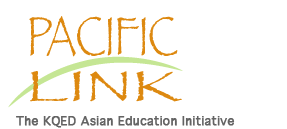|
Year
|
Events
|
|
1846
|
Bear Flag Revolt in Sonoma; Mexican-American War reaches California
|
|
1848
|
Treat of Guadalupe Hidalgo ends Mexican-American War;
Gold discovered at Sutter's Mill along the
American River in the Sierra Nevada mountains
|
|
1850
|
California becomes the 31st state of the United States of
America; state imposes a foreign miners tax on gold miners
coming from outside the U.S.
|
|
1851
|
US Congress passes the Land Act of 1851 to regulate
California's rancho lands, resulting in the
disenfranchisement of the Californios and redistribution of
their lands.
|
|
1865
|
Central Pacific Railroad begins recruiting Chinese
workers to build the railroad.
|
|
1869
|
Transcontinental Railroad is completed.
|
|
1877
|
Dennis Kearney founds The Workingmen's Party
in San Francisco and works to oppose Chinese labor
|
|
1879
|
California adopts a new state constitution which bars
public entities from employing any Chinese laborers and
allows local governments to either remove Chinese residents
from their municipalities or restrict them to designated
locations.
|
|
1882
|
Chinese Exclusion Act passed by US Congress.
|
|
1885
|
Leland and Jane Stanford found Stanford University, one
of the first universities in the world to admit women.
|
|
1890
|
John Muir succeeds in establishing Yosemite National Park
|
|
1905
|
San Francisco labor leaders form the Asiatic Exclusion
League to advocate for the exclusion of Asian immigrants;
the League succeeds in pressuring the San Francisco Board of
Education to segregate Asian school children.
|
|
1906
|
April 19: Earthquake razes San Francisco to the ground
|
|
1908
|
Gilbert Anderson founds California's first
film house in Northern California
|
|
1913
|
California State Legislature passes law barring any
immigrant ineligible for citizenship from owning land; all
Asian immigrants were ineligible to become naturalized
citizens under federal law prohibiting non-whites from
becoming naturalized (however, all individuals born in the
US are still citizens by definition).
|
|
1916
|
Labor leader Tom Mooney is convicted of terrorism as the
battle against organized labor picks up pace across the
country; Mooney is pardoned and released in 1939.
|
|
1921
|
Japanese farm workers driven out of Turlock, CA.
|
|
1925
|
Polish immigrant Schmuel Gelbfisz partners with Russian
immigrant Louis B. Mayer to form Metro Goldwyn Mayer Studios
in Hollywood
|
|
1930s
|
The Great Depression hits the entire country; banks and
farms fail, wages drop; anti-foreigner sentiment heightens;
anti-Filipino riots break out in San Jose and San Francisco,
Mexican immigrant laborers are deported by the tens of
thousands
|
|
1930
|
Anti-Filipino riot in Watsonville, CA
|
|
1932
|
California unemployment reaches 28%
|
|
1934
|
The International Longshoremen's
Association's (ILA) extended strike in San
Francisco instigates a general strike throughout the region.
|
|
1936
|
Hoover Dam is completed, providing massive hydroelectric
power to Southern
California. The
Bay Bridge is also completed, becoming the
world's longest suspension steel bridge.
|
|
1942
|
Executive Order 9066 authorizes the internment of
Japanese Americans at 10 camps located throughout the
Western United States, including Tule Lake and Manzanar in
California
|
|
1946
|
Tule Lake Camp is last of internment camps to be closed.
|





